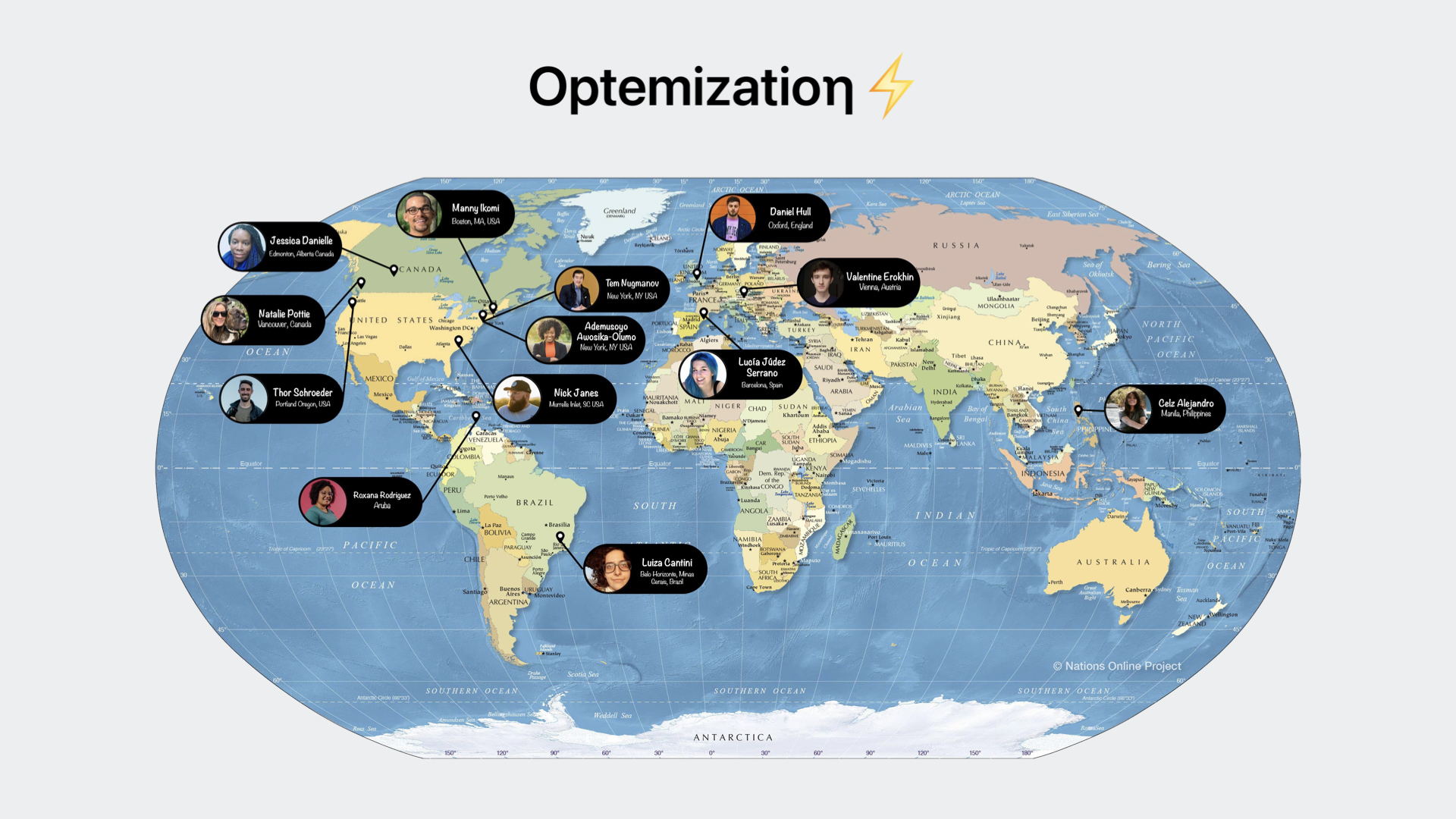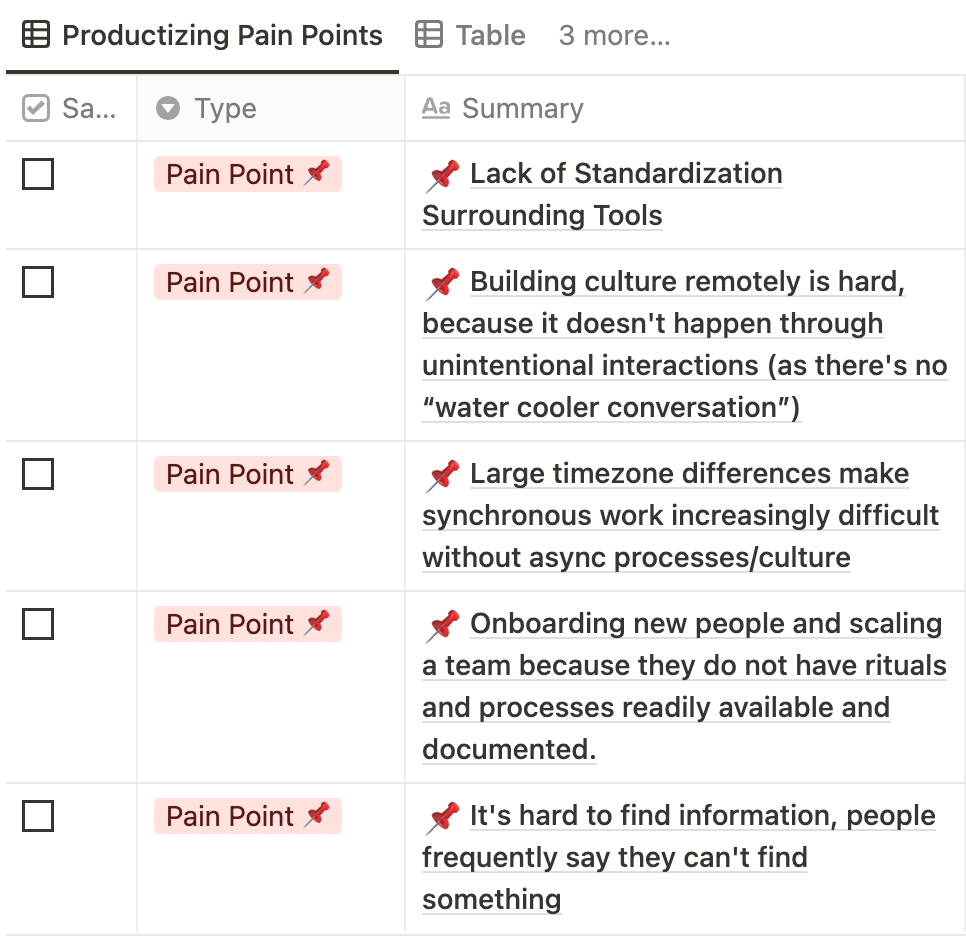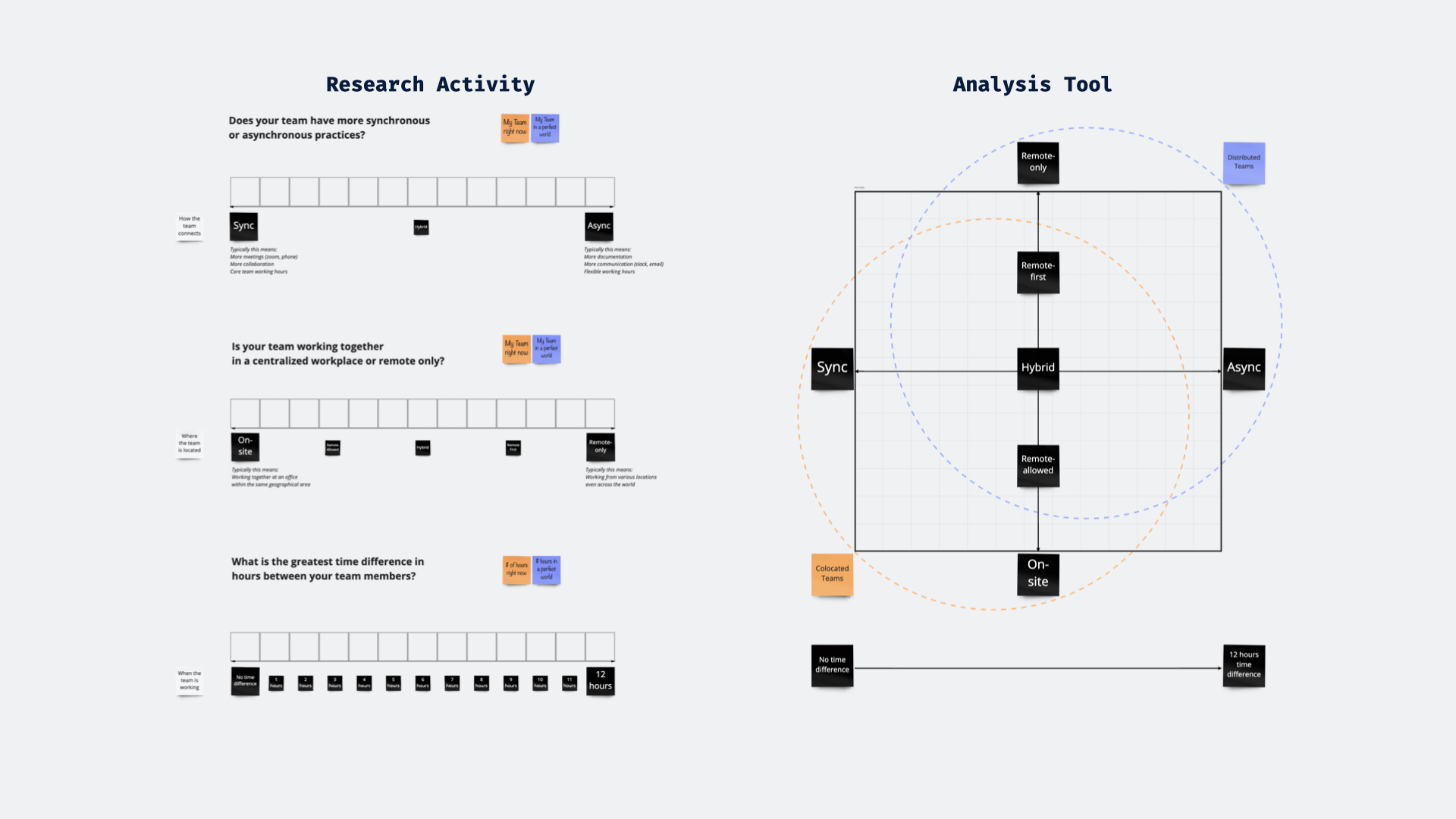Remote Work Matrix
A design research tool for evaluating how teams collaborate.
- Organization: Optemization
- Duration (1 months):
- Team:
- Manny, Lead Researcher
- Luiza
- Lucia
- Thor
- Tem, Founder & CEO
- + 7 other members
- Skills:
- Design Research
- Facilitation
- Qualitative Analysis
- Tools:
- Notion
- Miro
Optemization is an operations design agency…
I joined in August of 2021 that builds workspaces and automations that empower distributed teams at companies like Discord, Metalab and Stir. The COVID-19 pandemic presented an immense opportunity for the business to become an industry leading consultancy that helps teams collaborate remotely and optimize their workflows.

I led an all-hands research initiative on remote work with 11 team members.
The overall objective was to discover Optemization’s product-market fit among 3 target customer segments. We broke up into 4 teams of 3, with each team having a recruiter, interviewer, and analyzer. While analyzing and synthesizing some of our early responses I noticed a gap.
The team needed a way to quantify and compare timezone painpoints with our research participants.
One of the top 5 major pain points we came across in our research were timezones and the friction around scheduling and collaboration.

I designed a card sorting activity that measured timezone difference thresholds and 2 other characteristics on a spectrum:
- How the team works (sync vs. async)
- Where the team works (office-only vs. remote-only)
- Difference in timezone hours (0 hours vs. 12 hours)

I tested the framework in subsequent research interviews and iterated on both the card sorting prompts and the 2x2 matrix for analysis. After a few weeks and a more interviews I turned it into a Miro template and documentation for my team to use it in their own interviews.
The threshold for timezone friction was 6-9 hours for synchronous collaboration.
In addition to quantifying the timezone painpoints, the 2x2 matrix also helped us position our clients relative to us. This helped us better identify a match (or not) between our current services and client needs.

My Impact
Just wanna say that Manny and his design thinking UX initiatives have been remarkable. I love how their impacting my thinking and I hope that we can share that across Optemization efficiently. — Tem, Founder and CEO of Optemization
Thank you Manny for making it always so easy and approachable and being such a MASTER facilitator!! Your humongous efforts behind this entire sprint do not go unnoticed. — Lucia
What I Learned
- Card sorting activities are an extremely effective way to virtually engage with research participants and capture information.
- Notion is a powerful tool for setting up a qualitative research repository.